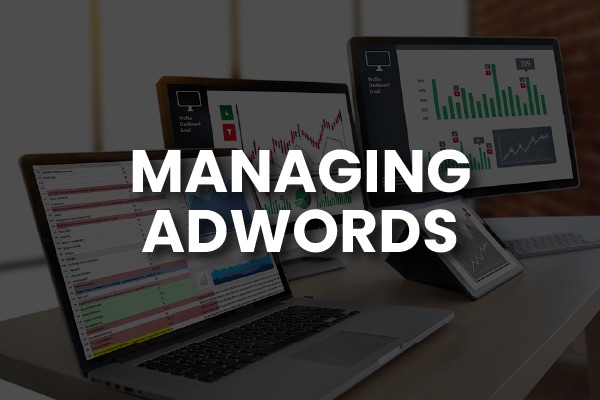
One of the best things Google did when they started the Pay Per Click revolution was they made it available to everyone. Any business owner if they chose could go in, create an AdWords account, set their geography, pick their keywords, and it’s off to the races. Of course, it’s also one of the worst things they did.
For the last few weeks, we’ve taken a deep dive into how AdWords actually works and why your bid isn’t the most important thing to pay attention to.
Understanding what Google’s trying to accomplish and how quality score works is a great first step. Now, let’s continue this series and examine not just how to improve your quality score, but also what happens to your ROI when you take a quality score first approach to your paid search.
How Can I Improve My AdWords Quality Score?
Knowing the importance of Quality Score and how it is arrived at is one thing. It’s another thing to understand how to improve it. We’ll get into deeper specifics in a later article, but the quick, common sense answer is, you know how quality score is arrived at, so look at how your ad does for each piece.
- Click-Through Rate — Look at the click-through rate for a particular search, then look at the ad you are running for that term. How can you change that ad to make it more attractive? What can you change to get a consumer to decide that you are the right result for him? Are you searching for yourself on Google directly to see your ads on the results page instead of using Google’s Ad Preview tool? Think about that. Every time you search for yourself just to see if you are there and don’t click on your own ad, because why would you, you lower your click through rate and cost yourself more money in the long run.
- Relevance of the Ad Text — Look at each ad you are running, and what keywords you are running that ad for. Does the text in the ad speak specifically to a consumer looking for a particular product or service, or is it more general? If your ad only contains general information, create a new one that is more specific. If the ad is specific, but the click-through rate is low, think of ways to connect with the user and to stand out from all the other ads on the page, what would make YOU click on an ad if you were searching for that service?
- Quality of the Landing Page — What will happen when the user lands on the page you are linking to? Will it load quickly? Will they be able to read it on a small mobile screen? Does it contain information specific to what they are searching for? Did you make a promise in the Ad Text like “$100 off your entire system” that isn’t mentioned on the page they land on? Many of the factors that determine the quality of a landing page for Google’s PPC algorithm are the same things that are addressed by Search Engine Optimization. If you have been doing PPC for a while, and you feel like your quality scores are stuck, an investment in SEO will likely have a positive impact.
Is Quality Score REALLY That Important?
If you care about how much it costs to get someone to pick up the phone and call you, it sure is! The truth about quality score is that the algorithm sees it in much greater detail than what Google shows you in your AdWords account, but what they do show you is invaluable information as to why your AdWords investments are making or losing money, and how to better manage your budget.
One of the most influential names in the business, the paid search tool vendor Wordstream, has amassed a large amount of data from their users about all paid search metrics. They have published some incredible findings about how important quality score is to your bottom line.
The score you see in your account is a number between 1 and 10. The worst is 1 and the best is 10. Wordstream has found, using a quality score of five as a benchmark that auctions won on keywords with a quality score of one pay about four times what the same position would cost a user who had a quality score of five for that term. Moreover, an ad placed with a quality score of 10 on average pays half what an ad with a quality score of 5 pays for the same position on the same keyword in the same location.
Think about that. That means that an ad with a poor score that pays $30 per click would pay $7.50 for the same click if they managed to get the score up to just average. And if you really do a great job and get the score to 10 (Note that this is a rare feat, 8 is considered to be an outstanding score) would pay $3.75 for the same click, from the same consumer, looking for the same thing, in the same location.
What does Quality Score REALLY Mean?
Let’s think about what that means. Fact. Not everyone who visits your website decides to do business with you. For simplicity’s sake, let’s use a 1/10 ratio for the imaginary keyword we are looking at here.
So if 10 people read what you have to say, one will call you to buy your product or service. That means that campaign managed by the guy who thought he could do it himself and didn’t want to pay the “exorbitant” management fees an expert would charge is paying $300 to get ONE PHONE CALL. While the guy who puts some time and effort into it, and has some idea of what he’s doing pays $75 for the same phone call, from the same consumer. The guy who hired the expert who managed to run the quality score up to 10 paid $37.50. Now look at it in terms of a $5,000 total budget. Business #1 got 16 calls. Business #2 got 66. Business #3 is rolling in the dough after receiving 133 calls on the same budget.
Yes, I just oversimplified everything. No, you can’t expect a quality score of 10 for all the terms in your keyword list. But hopefully, you’ve just seen why it pays to hire someone who really understands how to manage it! “If you think it’s expensive to hire a professional to do the job, wait until you hire an amateur.” — Red Adair



